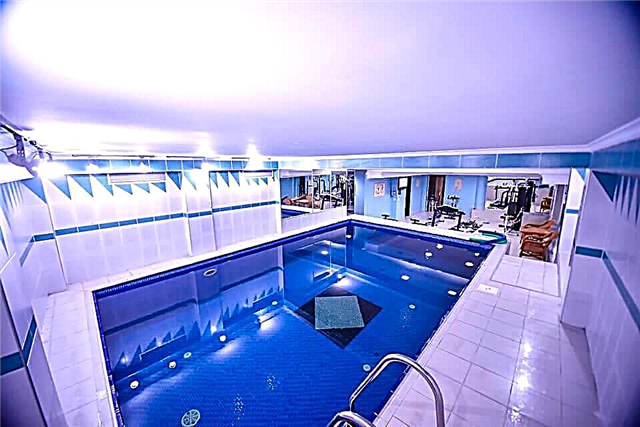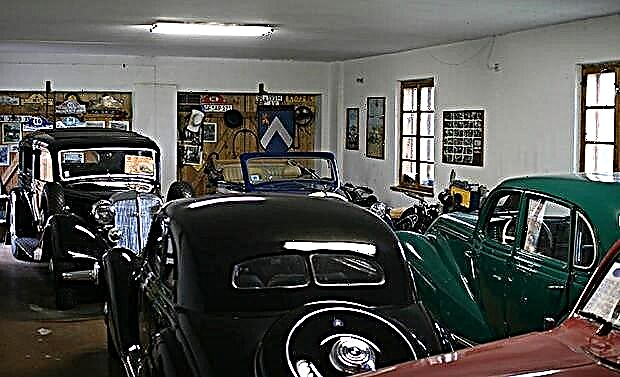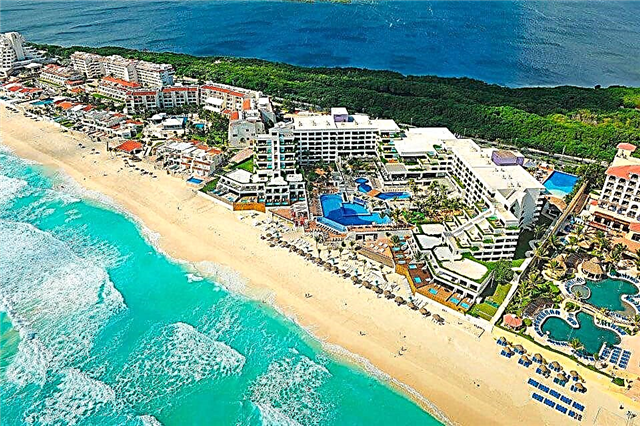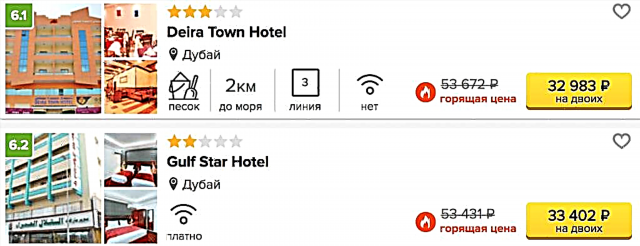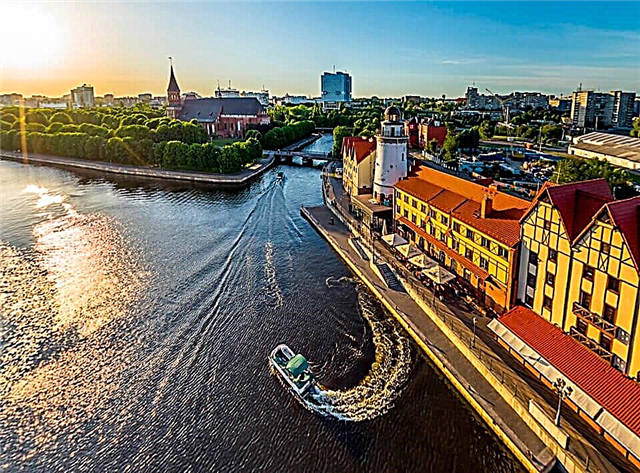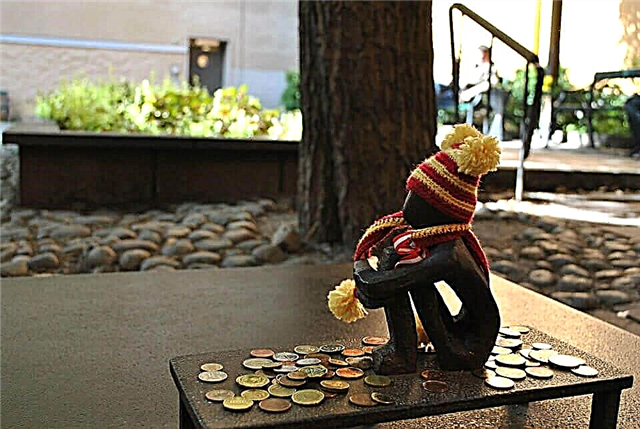Many people associate the name of this Scandinavian city with the concepts of “Nobel laureate and Nobel prize”. It is in the Swedish capital that the world's most prestigious prize is awarded. Music lovers are well aware of the famous ABBA quartet. Today this amazing metropolis of 14 islands and 50 bridges, one of the cleanest and most beautiful European cities, delights with a variety of neighborhoods that are strikingly different from each other. Wide modern avenues with modern buildings border narrow cobbled streets, with brightly colored toy houses; innovative buildings coexist with old buildings. Technological achievements of urbanism coexist perfectly with pristine ecology, with green massifs of luxurious parks and squares. If you have a very short visit, you can plan in advance what to see in Stockholm 1 day in advance.
Katarina's Lift observation deck

It is impossible to see all the main sights of the Swedish metropolis in 1 day. You yourself can choose the most interesting objects from the long list of top places recommended in this article. The first observation deck on this list with the original name "Katarina's Lift". It is located in the center of the Old Town in the district of Slussen at a height of 38 meters. It was built as a communication point between sections of the city with a large elevation difference. The elevator Katarinahissen, built in 1881, was reconstructed in 1935.
The past years have worn down the mechanism thoroughly, and in 2010 Katarina's elevator was closed for safety reasons. Now tourists climb the zigzag stairs to the site. The lift is carried out in exceptional cases. The observation path is fenced with a high lattice to avoid accidents. But even it does not interfere with seeing an irresistible panorama of Stockholm's beauties and appreciating the splendor and power of the main Swedish city. From here you can see the "Russian Courtyard", the Stockholm History Museum, the majestic bridge, the Town Hall, etc.
Monteliusvegen street

You can immerse yourself in the enchanting world of Stockholm views on Södermalm Island, where there is Monteliusvegen Street, along which a path winds along the edge of the cliff. This is a romantic promenade with equipped observation platforms, benches and steps. At the very beginning there is the park of Ivar Lu-Johansson, a famous writer and socialist public figure. He fought for the social rights of poor peasants and workers. Therefore, the park in his honor begins with an installation with a horse harnessed to a cart loaded with cans of milk.
Couples in love love to walk around Monteliusvegen, hanging locks and notes with desires here. Tourists love to walk along the trail to take pictures against the backdrop of stunning views. The “crowns” of the Town Hall, Riddarferden Bay, Kungsholmen Island and the entire Old Town are the perfect backdrop for selfies. No less interesting is what is on the other side of the street: beautiful old houses with cozy clean courtyards. Among them is the historical building of the brewery, with picturesquely decorated workshops.
Skinnarviksberget

If you go further along the trail, without going down to Monteliusvegen, then you will certainly find yourself at a high (53 m above sea level) green hill. It is a favorite spot for Södermalm youth who usually come here in the evening. But the rest of the inhabitants of the island also actively visit Skinnarviksberget during the daytime. They come here with blankets and food, arrange picnics here, admiring the beauty that is spread below. Especially on weekends, literally every square meter is busy here.
It offers breathtaking views of the main attractions not only of Södermalm, but also of other areas. The picture is truly delightful and grandiose - the whole city is at your feet. You can take many unique photos to surprise your loved ones. Skinnarviksberget is the best observation deck in the city, as well as the sight from it. You should definitely visit here.
Royal Palace

Once on Stadholmen Island, do not hesitate to head to the official residence of the kings of Sweden. The imposing building of the Royal Palace, located on the very shore of the bay, houses several museums. In 600 rooms all the treasures of the Swedish monarchs and various attributes of their power are presented. A visit to the Treasury leaves a deep impression. The royal crown studded with precious stones, luxurious robes, robes, scepters, wands and much more are amazing.
The Armory will also impress, whose exhibits reflect the history of royalty for 500 years. The uniform of the famous ambitious Karl XII, luxurious carriages for ceremonial trips, military uniforms are demonstrated here. There are unique exhibits - examples of clothes of executed members of royal families. Tourists actively visit the Museum of Antiquity, with Italian marble sculptures. It is worth seeing the Three Crowns Museum, which showcases ancient fragments of an ancient castle.
Livrustkammarin

Such an intricate word is called the Treasury of the Swedish kings, located in the Royal Palace. It contains all the symbols and attributes of power collected over the centuries. Livrustkammarin was opened by order of King Gustav Adolf I in 1628. Many ancient exhibits have survived in their original form, clearly illustrating the luxury and wealth of monarchs.
Ancient symbols are still used today by the royal family on special occasions. The Halls of the Treasury are equipped in the basement of the palace. Visitors have the opportunity to see knightly armor: ancient helmets, visors, chain mail. Surprising is the helmet with a crest worn by King Gustav Wase 500 years ago. The magnificent ladies' toilets are presented - dresses adorned with precious stones, lace.

Girls and girls are delighted with the luxurious wedding dresses of queens. The collection of old children's toys that the infants used to amuse themselves with is of great interest to children. For young visitors, there is also a special play and learn room, where children get to know the history of the Swedish crown in a playful way.
Royal drama theater

Being in the center, you cannot fail to notice a magnificent building that combines massive solidity and at the same time some kind of airy lightness and grace of lines. On the high steps of the Royal Drama Theater, vacationers and townspeople always sit during the day. The State Drama Theater was founded in 1788, but for 100 years operas were staged in the building along with dramatic performances.
Neither the actors nor the audience were satisfied with this. The drama theater was given an old dilapidated building, which at the beginning of the 20th century. demolished and erected the Royal Drama Theater. The appearance of the theater impresses with its luxurious design: stucco moldings, gilded statues, decoration of poster columns look stunning. The architectural masterpiece was built at the expense of public funds collected "by the whole world." Judging by the generous gilding of the foyer's interiors, they raised a lot of funds. The 7 halls of the theater, isolated from each other, allow staging several performances at the same time.

The hall with the main stage can accommodate 720 spectators, and the smallest one has 60 seats. Everyone is interested in the bronze sculpture standing against the wall at the corner of the theater. This is a "living statue" of the actress Margareta Kruuk, heated to a temperature of + 37 °. The "Temple of Dramatic Art" leaves no one indifferent.
Boy looking at the moon

If, after visiting the Royal Palace, go along the street. Finska Kyrkoqrand, and, bypassing the Finnish Church, turn onto st. Tradqardsqatan, then from it you will be taken to the Bollhustappan courtyard. It contains a very touching object - a tiny sculpture of the "iron boy".It is officially called "The Boy Looking at the Moon" and was created by the Swedish sculptor Liss Eriksson based on his childhood experiences in 1954.
Carved out of sandstone and covered with wrought iron, the figure of a child hugging his knees and looking up looks very touching. It evokes much more sympathy for the townspeople and tourists than monumental monuments. In winter, people put on hats, scarves, jackets on the boy, which are often changed. By tradition, everyone pats the boy on the head, makes a cherished wish and leaves coins or sweets. And in the summer they put flowers on a pedestal-bench.
Riddarholmen Church

Not far from the Town Hall and the Royal Palace rises the openwork of the pointed spire of the ancient church of Riddaholmen. This is one of the oldest buildings in the city, an architectural and religious rarity. It was founded by the Franciscans in 1270, and the high tower with a spire was completed in the 16th century, during the reign of Johan. At the same time, outside and inside, a reconstruction was carried out, decorating the interior with beautiful paintings. After the Swedes adopted Protestantism, Riddaholmen lost its significance, becoming the burial place of 17 Swedish kings and queens.
It is in it that the ashes of the famous Karl 12th, as well as the ancestor of the now ruling dynasty Karl 14th Johan, rest. His remains are housed in a tall red porphyry sarcophagus. 3 chapels of the church are dedicated to the burials of royalty. One of them, the Karolinska Chapel, was added to the central part of the church in the 18th century. Riddaholmen is open for visits only in the warm season, services are not held there. But the appearance of the church is also worthy of your attention.
Church of St. Nicholas

The main Cathedral of St. Nicholas is located in the vicinity of the Royal Palace. It was built in the 17th century. on the site of an old wooden church of the 13th century, built by the founder of the city Birger Young. The impressive size of the church is inferior in scale and appearance to the Italian and Spanish counterparts, but in its own way it is very good.
Red brick, white plaster, gold ornaments create a majestically beautiful appearance of the cathedral. Today, various rituals of the royal family take place here. One cannot help but admire the Gothic interior of the cathedral, with graceful brick columns that create the impression of an upward aspiration. The altar is impressive in black and silver, with a rich iconostasis and a bright stained-glass window above it. The main decoration of the cathedral is an amazing wooden sculpture of the 15th century.
George the Victorious, who slain the Dragon with a spear. Over time, the oak material began to look even more noble. The gigantic picture of "The Last Judgment" is amazing. Artistic canvases by famous masters, including a copy of the False Sun, adorn the walls of the cathedral. Almost every item inside has its own story.
Nobel Museum

In the Old City (Gamla Stan) on pl. Stortori houses the Nobel Museum, the founder of the Peace Prize for Achievements in Science and Literature. The square is guided by 2 brightly colored houses - the symbols of Stockholm. Just opposite them, you will see the classic building of the former Stockholm Stock Exchange, where in 2001, in honor of the 100th anniversary of the establishment of the prize, a museum was opened. Nobel. Despite not very cheap tickets, people actively go to the "temple of science".
If you come to the museum on Tuesday after 17.00, visit the exhibitions for free. Everyone is greeted by a mysterious wall with flickering lights, electronic displays, intricate zigzags under the ceiling. On a black background - a white death mask of Alfred Nobel. Several exhibitions showcase exhibits illustrating the Prize-giving procedure: garments of famous laureates, serving banquetware, photographs of the public in black tuxedos and evening gowns, etc.
Information about the subject of interest can be obtained by clicking the button on the electronic board. The following exhibitions highlight the award-winning inventions and discoveries. The inscriptions on them are in Swedish and English. Videos with subtitles are broadcast from large screens. The highlight of the tour is the "procession" of 900 Nobel Prize winners along the suspended cable car fixed under the ceiling.
Medieval Museum

Don't you believe in the miracle of teleportation? Then be sure to visit the extraordinary Museum of the Middle Ages, which is located under the Norrbro Bridge, between the Royal Palace and the Opera House. In the underground, once secret corridor, laid under the strait, there are exhibits depicting the life and life of Stockholmians in the 13-16th centuries. In 1978, as a result of archaeological excavations related to the reconstruction of the Parliament building, many artifacts were found. They were sorted by museum specialists and placed in an underground corridor.

Once in it, it will seem that you have returned 5 centuries ago - the atmosphere of that era is so realistically recreated here. Items of antique furniture, clothing, tools, craftsmen's tools, children's clay whistles and so on are impressive in their preservation. Figures of medieval characters in authentic costumes delight with the believability of the image, as in a wax museum. Eyes, hair, wrinkles seem alive. But besides this, a fragment of the 14th century cemetery wall belongs to the Medieval Museum. and a ship raised from the bottom of the 16th century.
Town hall

Built on the spit of Kungsholm Island, a majestic red brick structure - the City Hall. The main symbol of the Swedish capital was under construction for 12 years (1911-23) according to the project of the talented architect Ragnar Ostberg, who left a wonderful trace of his work throughout Sweden. It is difficult to convey in words the admiration of the monumental building - its inimitable grace and beauty will be undeniable for many centuries. This unconditional architectural masterpiece is the city's tourist Mecca. The flow of tourists here does not dry out even when you cannot go inside.
They aim to climb 365 steps to the very top of the 106-meter tower to see the entire city from there. This takes 20 minutes - if you don't count on your strength, take the elevator. About 8 million "monastic" bricks, made according to the technology of the Middle Ages, were used for the walls of the town hall. The tower is crowned with a rotunda, on the roof of which there is an ancient symbol of Sweden - 3 golden crowns. You can get inside only as part of a group tour.
The interior of the town halls is also admirable. The Golden Hall, decorated with a mosaic of 18 million gilded tiles, hosts the annual Nobel banquets. Banquet tables are also served in the hall for 1,000 people, called the Blue one. Although in reality the walls are brick. Initially, it was planned to cover them with blue paint, but Ostberg liked the color of the unique brick so much that he left them that way. Everything about the Town Hall is deeply impressive.
Royal Opera

Next to the building of the Swedish Parliament is the Opera Theater, or, as it is called, the "Oscarian Opera". It was during the reign of King Oscar II that this building of a very intricate design appeared, with numerous architectural decorations. The history of Swedish opera is even connected with the tragedy when in 1792 King Gustav III was killed during a masquerade held in the old opera house. Later, Verdi would write the opera "Masquerade Ball" with a libretto based on a real murder.
The son of the murdered king Gustav IV did not like opera, money for restoration was not allocated, the building was dilapidated. In 1892, it was demolished at the behest of Oscar II and the one in which the performances are now being built was built. The interior decoration impresses with a royal scale of luxury, dazzling with the glitter of gold, expensive wood, velvet and crystal. The highly artistic style of decoration, with skillful carving, stucco molding, chic chandeliers and ceiling shades, amazes.
The Golden Foyer, whose ceiling height reaches 11 meters and the length is 28 meters, is an emotional shock. All the walls and ceiling of the room are covered with gilding. 2 huge gorgeous chandeliers and wall sconces enhance the golden glow. Children's musical performances are held against this luxurious backdrop.There are chairs and sofas for the parents, and the children sit on the parquet floor.
Kunstradgarden Square

The favorite place for walks of the townspeople is the Royal Garden (Kunstradgarden), more precisely, the place where it is located has been known since the 15th century. as a "royal cabbage garden". Cabbage and other vegetables for the royal family were grown here. At 18, the former vegetable garden turned into a park, decorated in the Baroque style. From the Royal Palace, the Strombron Bridge leads to it, thrown across the Stallkanalen Bay. Walking along it, you will find yourself in a wonderful resting place for Stockholm residents.
At the southern end of the garden there are monuments to the 2nd Karl: the notorious Karl XII and opposite him - Karl XIV. In the center there is a monumental fountain by Y. Mulin, who embodied the characters of the Scandinavian epic in its design. The bowl of the fountain is surrounded by sculptures of the formidable lord of the oceans, Aegir and his 9 Wave daughters.
Around the Water One, playing the harp, Valkyries swim in the form of black swans. You will be lucky if you visit the northern part of Kunstratgorden during the cherry blossom season - you will see a picture of incredible beauty: white and pink clouds of 63 cherry blossoms. In winter, a skating rink is flooded in the garden, demonstrations take place on May 1, and rock concerts in summer.
Sergelstorg

Do you want to change your impressions of the wonders of the Old Town and see the modern Stockholm of the 21st century? A full picture of it will give a visit to the central square of Sergelstorg. Although it appeared in the 90s of the 20th century, it received its name from a sculptor who lived in the 17th century. Johan Sergel had a workshop in this place and was the mentor of King Gustav III. Monuments to Sergel are located in 2 places of the square. The central point is decorated with an original form of glass column, nicknamed "pointer". One of the corners of the square is occupied by the largest department store in the city "Olens".
Among the modern glass-concrete hulks, the modern building of the Cultural Center stands out, with various galleries, concert venues, cafes and shops. In one of the panoramic cafes, you can have a snack at a very budgetary price while looking at the "human sea" outside the window. There are always a lot of people here, because Sergelstorg is the intersection of all metro lines. In the very center there is an underground passage covered with black and white tiles, where musicians play in the evenings. Popular festivities, rallies and festivals take place on the square.
Brunckeberg tunnel

An amazing underground structure - the result of tremendous work and technical achievements of the late 19th century - the Brunckeberg tunnel is laid under the hill of the same name. It was equipped in 1886 by order of King Oscar II at a depth of 15-20 m. An underground passage 231 m long, 4 m wide, 3.9 m high connected 2 r / na - Norrmalm and Estermalm. It is open from 6 a.m. to 10 p.m., the entrance to it is b / n, there is a bike path. The project was created by the architect Lindmark, the author of the Katharina elevator. Externally, the tunnel looks like a pipe, presentably decorated with cladding materials.
The construction of the tunnel was an ordeal for the workers, for Lindmark himself, and for funding. Especially a lot of difficulties had to be endured when laying the western part of the tunnel, among the loose rock of sand and gravel. It had to be frozen using an English refrigeration machine, then a metal frame was laid and concreted. In places of rocky ground, the transition was left unlined from above, but everything looks very neat and civil. Even a cursory inspection is enough to assess the extent of the work on the tunnel.
Kaknes TV Tower

There is a high-rise building in the city, which has become an indispensable attribute of every capital of the world in the 20th century. - TV tower. In 1963, the Kaknes TV Tower began to be built on the site of a small medieval village. Since its opening in 1967, it has become Sweden's main television broadcasting center and the city's tallest observation deck. The architecture of the tower is in the classic style of the 60s, its facade is decorated with cast symbols of TV and radio signals. The height of the building together with the antenna is 170 m. The tower is surrounded by a beautiful ecological park.
Today it has turned into a cultural and entertainment facility that attracts visitors to the city. A visit to the TV tower is an unforgettable experience. On the top 28th floor of Kaknes, there is a restaurant, a cafe and an observation deck. To protect them from sunlight, the double-glazed windows in them are covered with a special compound. There is a souvenir shop downstairs, which is equipped with an elevator to go upstairs. You can enjoy the incredibly beautiful sight of the city from the observation deck or from the windows of the restaurant.
A visit to this institution is a pleasure for excellent quality cuisine, exquisite menu. Here you can see the works of contemporary artists, whose original works adorn the walls of the restaurant. Everyone especially loves the organization of a Christmas dinner filled with magic and romance.
Swedish Army Museum

On the island of Nybruplan, where you can sail by excursion boat, there is an unusual Museum of the Swedish Army, a visit to which will be interesting for everyone, regardless of age and gender. It presents 100 thousand items related to the centuries-old army history. The 3-storey building with a round dome is fenced with a lattice metal fence with military symbols. A monument to the fallen soldiers who participated in the Battle of Poltava is erected at the entrance. A row of ancient cannons is lined up at the façade.
Here, a huge number of different types of weapons are striking, ranging from ancient pistols to modern copies. Among them there are truly exotic exhibits donated by collectors. Interesting exhibitions of military clothing, uniforms, greatcoats, emblems. The wax figures of soldiers, peasants, cavalrymen, artillerymen and other representatives of the army are impressive. Real rarities - almost 5 thousand exhibits representing the Thirty Years' War.
Junibacken Museum

The popular entertainment center for children is centrally located on the island of Djurgården. A fabulous house surrounded by installations based on various fairy tales - Junibacken Museum, a favorite place for children. The heroes of all known Scandinavian fairy tales and sagas "live" in it. There are numerous performances with their participation. The famous Astrid Lindgren insisted on organizing such an institution (1996), so many call the museum after her.
A monument was erected in the courtyard after her death in 2002. In the first hall of the museum there are many houses, rooms, stairs, along which children can freely climb and examine everything. Carlson, Pippi Longstocking - the heroes of Lindgren's works share fame along with the Moomin trolls Tove Jans and the characters of other authors. The most fascinating attraction is a journey through fairy tales on a special train with cute carriages. Children learn a lot about fairy tales and their heroes.
Here is Villa Pippi, where children, together with a mischievous girl, can laugh and play pranks. Even the restaurant in the museum, where you can eat, is just as fabulously bright. One of the rooms is equipped with a fabulous town, where there are tiny shops, banks, a theater, a railway - the entire city infrastructure. Here children play the roles of salesmen, cashiers, bankers, etc.
Vasa Museum

On the same island of Djurgården there is another unique museum of one ship. This is the legendary warship "Vasa", built in 1627. He was to become the flagship of the Swedish navy. The ship was built by 400 people, more than 1,000 oaks were cut down, 50 bronze cannons were cast. The ship was decorated with many carvings and gilding.
King Gustav II personally inspected the construction. But immediately after Vasa's descent in August 1628 at sea, the ship capsized and sank. After 30 years, bronze cannons were lifted from it, and Vasa lay at the bottom for 330 years until 1961. Some parts of the ship collapsed, but many of the main fragments survived. Today it is the only well-preserved 17th century ship in the world.
After its restoration, it became a museum object, representing a highly artistic example of the design of a ship.Today the sailboat Vasa is the most popular attraction in Sweden. Everyone is looking with great interest at the hundreds of carved sculptures that adorn the "masterpiece" of shipbuilding. Tours are conducted with audiogod in different languages, films are shown. There is a gift shop, a restaurant.
Skansen

An amazing sight awaits you in the unique ethnographic open-air museum - Skansen. This former Skansen estate was bought by Arthur Hazelius and in 1891 organized a kind of folklore mini-Sweden on the territory. There are 150 manors of the 18-19 centuries, souvenir shops, craft workshops, and a zoo. Here you can watch the work of potters, glassblowers, bakers, tanners. As in a real authentic town, there is a church, a smithy, cultivated gardens.
Each house reflects the life and everyday life of people of a certain class. They are staffed by guides dressed in appropriate costumes. Interiors for certain, down to the smallest detail, recreate the era of the past. Sometimes musicians in costumes of the 18th century play here on ancient instruments. Children are greatly interested in visiting the local zoo, where the most natural conditions for the stay of animals have been created. There are even bison that have not been in Sweden for a long time. Skansen is one of the most fascinating places in Stockholm.
ABBA Museum

It is not by chance that the island of Djurgården is called "museum": not so long ago, another museum appeared here. It is dedicated to the legendary four of pop singers - the renowned group ABBA. Although 30 years have passed since its collapse, their hits are still loved all over the world. Famous soloists donated not only rare exhibits to the museum, but also innovative ideas for the design of expositions.
As a result, a modern interactive institution was formed, so far the only one in the world. Among the exhibits are concert costumes, musical instruments, many posters, booklets, video recordings, films. The "highlight" of the unique institution is the opportunity to communicate on a regular phone with any of the group members who called here. Don't be surprised if a museum piano suddenly starts playing without a pianist. It is connected to the piano of Andersson, the band's composer.
When he sits down at his piano at home, all visitors listen to him playing in the museum hall. If you wish, you can record any ABBA song here, visit their studio interactively. Visitors are delighted with the appearance on the stage of holograms depicting legendary musicians in dance. You can join them and dance together.
Grena Lund amusement park

The oldest amusement park Grena Lund is located on the island of Djurgarden. 130 years ago, the German entrepreneur Schultheis rented a plot of land and built several attractions. They immediately became very popular with the local population. Over the years, the park has expanded, replenishing with new attractions, and has not lost its relevance today. The townspeople are happy to come here with children. Along with the entertainment facilities of the last century, modern ones have appeared, from funny attractions to extreme adventures.
On the high 80-meter tower, you can experience the feeling of weightlessness as you fall down. A thrill will be delivered by the "Haunted House" attraction for older children, inhabited by "trolls" and various horror stories. Everyone is able to test their dexterity on the "Viking Ship" and in the "Merry House", climbing swaying stairs, ladders, carpets. In fact, Grena Lund is a mini-town with cafes, restaurants, concerts and performances.
Photographisk

In 2010, a photographic exhibition “Fotografiska” was opened in a solid historical building of the former customs office, right on the coast of the bay. It has become the largest exhibition center in Europe (2500 sq. M.) And a popular tourist destination. It is worth coming here in the evening, having previously booked a table in the restaurant as the final chord. At the same time, photos of different authors are displayed on 3 floors of the center.
The 1st floor is dedicated to the work of the classic Christer Strömholn, a renowned master of black-and-white backgrounds. The photos captured various life situations, behavior, people's reactions to various events, etc. On the 2nd floor, the works of a woman photographer with 50 years of experience Sally Mann “A Matter of Time” reign. The objects of her work are animals, children, relatives, a sick husband.
The photographs reflect the author's aspiration to penetrate into the meaning of human life, which ends in death. The theme of death is almost the main one in her works. The third floor is dedicated to the work of Maria Friberg, who explores the gender role of men in modern society. The apogee of the visit will be a visit to a restaurant with panoramic views, where you will relax and unwind from a day tour of the city, admire the views of Stockholm in the evening.
Himlen Restaurant

In the district of Södermalm, there is the tallest building in the city, on the upper floors of which there is a restaurant with European, Scandinavian and national cuisine. Although the prices here are not at all democratic, the restaurant halls are never empty, especially on weekends. Not only good cuisine, delicious cocktails and excellent service attracts tourists and locals, but also the location of the restaurant in the highest place.
To get here without any problems, a table must be booked in advance. A romantic dinner against the backdrop of a stunning panorama of the central part of the city will be provided. If you are not planning to dine, you can book a table at the bar and admire the panorama with wine or cocktails.
How to get to the center

1.Did you arrive in Stockholm with the Silja Line ferry? Then you need to follow the arriving passengers to the Gardet metro station, get on the train and come to the center. 2. If you arrived by Saint Peter Line ferry, you also need to go to the same metro station and take a train to the center. 3. You can get there by bus N 76, but you need to buy a ticket for it at the SL kiosk, where passes for all types of transport are sold for 865 rubles. (130 kr) 4. From the Vikinq Line ferry pier, go to the stop of bus 53, which will take you to Riddarhustorqet. The second option is bus 443 to the station. Slussen.
There are 2 ways to get to the center from Arlanda airport. 1st of them: take the fast train Arianda Express, going from the airport to the central railway station. The ticket is not cheap - 280 SEK (1868 rubles), but it saves time. 2nd way - take the Flygbussarna buses. A ticket from the machine and from the driver costs 1,431 rubles (215 kr), via the website - 1,318 rubles. (198 kr) round trip. The bus takes quite a long time - 45 minutes to the central station.

